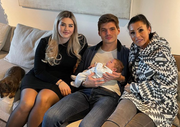
Imago
Image courtesy: Imago

Imago
Image courtesy: Imago
Formula 1 is not just a sport of speed and might. It is also a business. And if there’s one team who understood the economics of the sport, it is Mercedes. Lewis Hamilton and Co. may not have nailed the ground-effect regulations, but one thing they have nailed is cutting down on expenses and sticking to the budget cap. And While most teams are struggling to stay within the budget cap restrictions, Mercedes has managed to squeeze out a $60 million profit.
Watch What’s Trending Now!
Before 2021, big names like Ferrari, Mercedes, and Red Bull were used to utilizing all their resources to build a championship-winning car. But after the cost cap implementation, they’ve had to check their spending consciously. After the 2021 season, the FIA reviewed each team’s spending in 2021 and determined that Red Bull exceeded the budget by under 5%. As a result, the Milton Keynes outfit was fined $7 million. But while Red Bull buckled under the pressure of the cost cap, Mercedes thrived.
ADVERTISEMENT
Lewis Hamilton & Co. put on their thinking caps to benefit from the cost cap
The cost cap covers everything to do with car performance—car design and development, component manufacturing, testing and race operations, and the majority of employee salaries. However, there are also a lot of exclusions, including marketing, administration, and legal costs. Joe Pompliano, on his podcast – The Joe Pomp Show, and his Twitter feed, revealed that Mercedes currently brings in “$450 million in annual revenue, up from $196 million in 2013. And the introduction of the cost cap has helped Mercedes expand its profits from $15 million in 2020 to $75 million today.” But how did the Brackley team gain over $60 million in profits while other teams struggled to keep their spending within the budget?
ADVERTISEMENT
After the 2020 season, Mercedes cut 75 design, manufacturing, and engineering jobs. Another reason for increased profits has been the influx of money from their sponsorship deals. During its championship-winning years, Mercedes had a 25% TV share, which meant that the Mercedes cars (with its sponsors on their chassis) were on screen for one-fourth of the time F1 was airing, which invariably gave its sponsors screen time too.
ADVERTISEMENT
Top Stories
Max Verstappen’s Siblings: Everything We Know About Victoria, Blue Jaye, Jason Jaxx, and Mila Faye

“Filthy Games Were Played”: Helmut Marko Buries Christian Horner for Conspiring Against Him

Despite Shocking Breakup With Charles Leclerc, Ex GF Still Shares Close Ties With Ferrari

Are Max Verstappen’s Parents Separated? Everything to Know About His Difficult Childhood

Who Is Oscar Piastri’s Father, Chris Piastri? Co-Founder of Multibillion Dollar Automotive Company

Despite the cost cap and its repercussions, Mercedes has done exceedingly well. Even with the drop in employees in recent years, Mercedes managed to revamp its 2023 W14 challenger without exceeding the cost cap and has taken a significant step to close the gap with Red Bull. But Ferrari hasn’t been able to do so.
ADVERTISEMENT
Ferrari uses the cost cap as an excuse
Ferrari‘s reputation in F1 is taking big hits given its performances in recent years. While it developed a car with championship-winning potential last season, it missed out due to many errors. And this season, the Scuderia is nowhere close to Red Bull at the front. But it has managed to make at least the fourth-best car—sometimes the third—on the grid this year and is fighting Mercedes and Aston Martin for P2 in the championship. But the thing with Ferrari is that it has used the excuse of the cost cap as a reason for its slow development pace for far too long.

Reuters
Formula One F1 – Azerbaijan Grand Prix – Baku City Circuit, Baku, Azerbaijan – April 27, 2023, Ferrari team principal Frederic Vasseur ahead of the Grand Prix REUTERS/Leonhard Foeger
While Mercedes managed to revamp its entire car and bring upgrades that helped it get closer to Red Bull, Ferrari hasn’t used its resources as well as Mercedes has. If the Maranello outfit wants to stay in the fight for P2, it must stop making excuses regarding the budget cap.
ADVERTISEMENT
What do you think about Mercedes’ strategy to gain profits after the cost cap? Will it continue delivering every year?
WATCH THIS STORY | With the Rumored $49 Million Offer, Will Lewis Hamilton Take the Gamble on Ferrari?
ADVERTISEMENT
ADVERTISEMENT
ADVERTISEMENT

